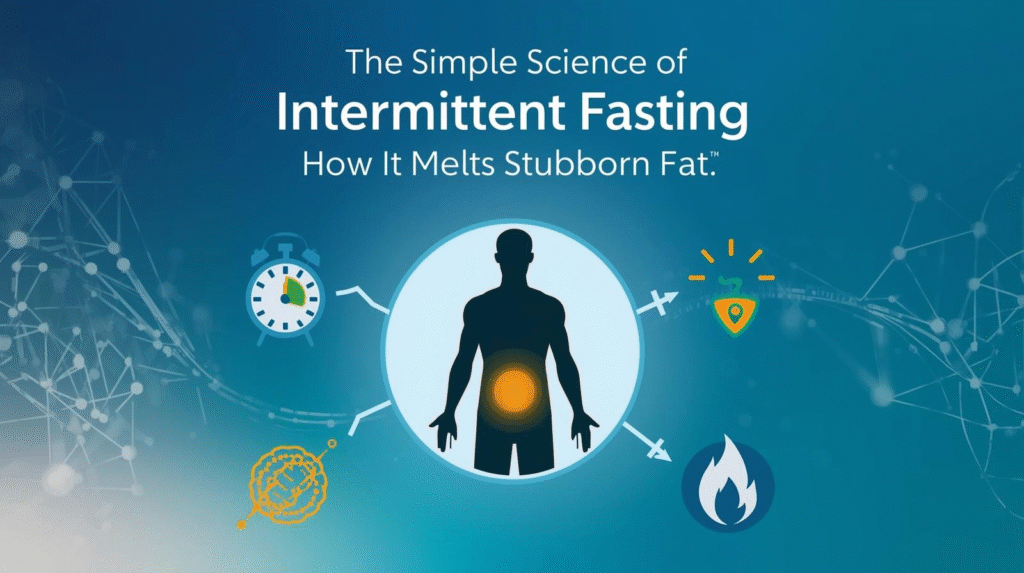It’s not magic; it’s biology. And you don’t need a PhD to understand it. Here’s a simple, no-jargon breakdown of what’s happening inside your body during a fast that leads to dramatic weight loss and better health.

When you hear terms like “insulin sensitivity” and “autophagy,” it’s easy to tune out. But understanding the basic science behind Intermittent Fasting is incredibly powerful. It turns this from a trendy diet into a logical, sustainable lifestyle. Let’s break it down with a simple story.
Act 1: The Fed State (The Storage Mode)
Imagine your body is a hybrid car. After you eat a meal, especially one with carbohydrates (bread, pasta, sugar, fruit), your body breaks them down into glucose (sugar). This glucose enters your bloodstream, causing your blood sugar to rise.
Your pancreas then releases a hormone called insulin. Think of insulin as a storage manager. Its job is to take that glucose out of your bloodstream and deliver it to your cells to be used for immediate energy.
But here’s the catch: your cells can only use so much energy at once. Any extra glucose gets stored for later. The first storage unit is your liver and muscles, in a form called glycogen. But these storage units are small and fill up fast. Once they’re full, the storage manager (insulin) has no choice but to store the excess glucose as body fat.
In the fed state, with insulin constantly on the job, your body has absolutely no reason to burn its stored fat. The energy from your last meal is readily available.
Act 2: The Fasted State (The Burning Mode)
Now, you start your fast. You stop eating. Over the next several hours, your body uses up the glucose from your last meal. Your blood sugar and insulin levels begin to drop.
This is the signal your body has been waiting for. With insulin levels low, your body can finally access its locked-away storage units. It first breaks down the glycogen in your liver for energy. This takes about 10-12 hours for most people.
Once the glycogen is gone, your body needs another fuel source. And it finds one: your stored body fat.
Your liver starts converting your stored fat into molecules called ketones. Voilà! Ketones become the new, clean-burning fuel for your body and brain. This metabolic state is called ketosis, and it’s the secret behind the rapid fat loss of IF. You are literally fueling your body with your own stored fat.
The Bonus Round: Cellular Housekeeping (Autophagy)
There’s another incredible benefit that kicks in during a longer fast (around the 16-18 hour mark): autophagy (aw-TOFF-uh-gee).
This is your body’s built-in spring-cleaning process. Literally meaning “self-eating,” autophagy is where your cells seek out and recycle old, damaged, and dysfunctional components. It’s like taking out the cellular trash. This process is crucial for:
- Anti-aging: Promoting healthier, younger-functioning cells.
- Disease prevention: Helping to protect against neurodegenerative diseases like Alzheimer’s.
- Reducing inflammation: Clearing out cellular debris that can cause inflammation.
So, Intermittent Fasting isn’t just about not eating. It’s about giving your body the metabolic signal to switch from a energy-storing machine to a energy-burning, cellular-cleanup powerhouse.
Want to Know For Sure?
If you’re curious about whether you’ve entered the fat-burning state (ketosis), you can actually test for it. Using Ketone Test Strips is an easy and affordable way to get that confirmation, which can be a huge motivator.